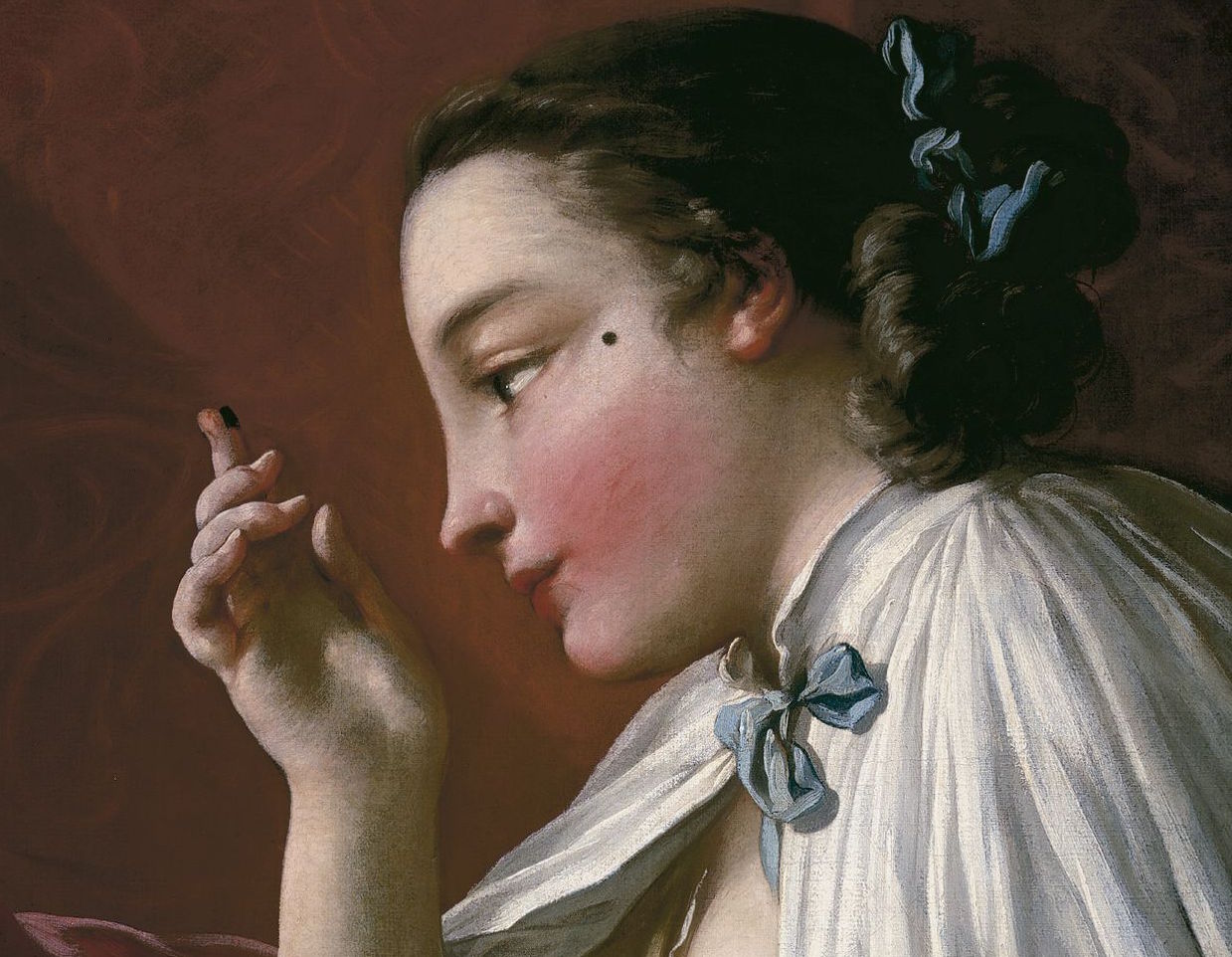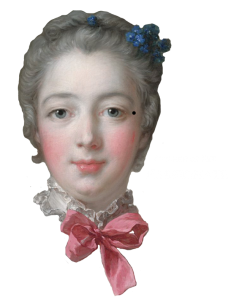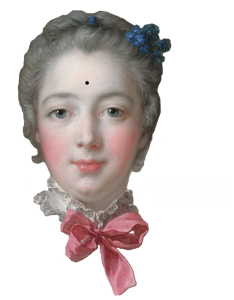
FINAL TOUCHES
“The role of a pretty woman is much more serious than one might suppose: there is nothing more important than what happens each morning at her toilette, surrounded by her servants; a general of an army pays no less attention to placing his right flank or his reserves than she does to the placement of a patch, which can fail, but from which she hopes or anticipates success.”
Montesquieu, Lettres Persanes (1721)

Annotated image of François Boucher, La Mouche or Une Dame a sa toilette, ca. 1738. Oil on Canvas. Private Collection. Cropped original image of painting. Annotated image by Eugenie Pron.
The culmination of the toilette consisted of a few symbolic final touches; jewelry, fragrance, and maybe the careful placement of a patch by Madame de Pompadour herself.
Patches, or mouches, of silk velvet or taffety were placed on a specific parts of the face, depending on its desired effect. Each patch had a name answerable to the effect it produced (Corson). The placement of the mouche was one of the most anticipated steps in the toilette as it confirmed not only a lady’s complexion, but her attitude for that day.





Composite image showing meaning of patch placement. Head extracted from Francois Boucher, Jeanne-Antoinette Poisson, Marquise de Pompadour, ca. 1750. Composite image by Eugenie Pron.
Despite her enormous influence on fashion beauty and her penchant for excess, Madame de Pompadour was not so interested in jewelry. During the last part of her toilette, she would adorn herself in a few simple pieces, most notably, a cameo bracelet (Goodman–Soellner). In Boucher’s portrait of Madame de Pompadour at her toilette, the cameo features a portrait of Louis XV, reminiscent of one she actually owned. The cameo portrait of Louis XV is the focal point of Boucher’s painting, affirming the statement Madame de Pompadour made by wearing this particular piece of jewelry–the assertion of her devotion to the king and her status as his permanent mistress (Hyde).
The ultimate step of Madame de Pompadour’s toilette was to douse herself in perfume–such a crucial component that perfume was referred to as eau de toilette. The Marquise’s courtly rule coincided with the burgeoning of perfume art as one of the most respected important industries in France, operating from the provencal town of Grasse. Madame de Pompadour shocked, as she often did, by wearing a typically masculine musk-based scent, as opposed to a more feminine floral scent. Her distinctive scent, created by master parfumeur Fragonard, was said to linger for hours in a room long after she had left it (Genders).
Pages
practice
